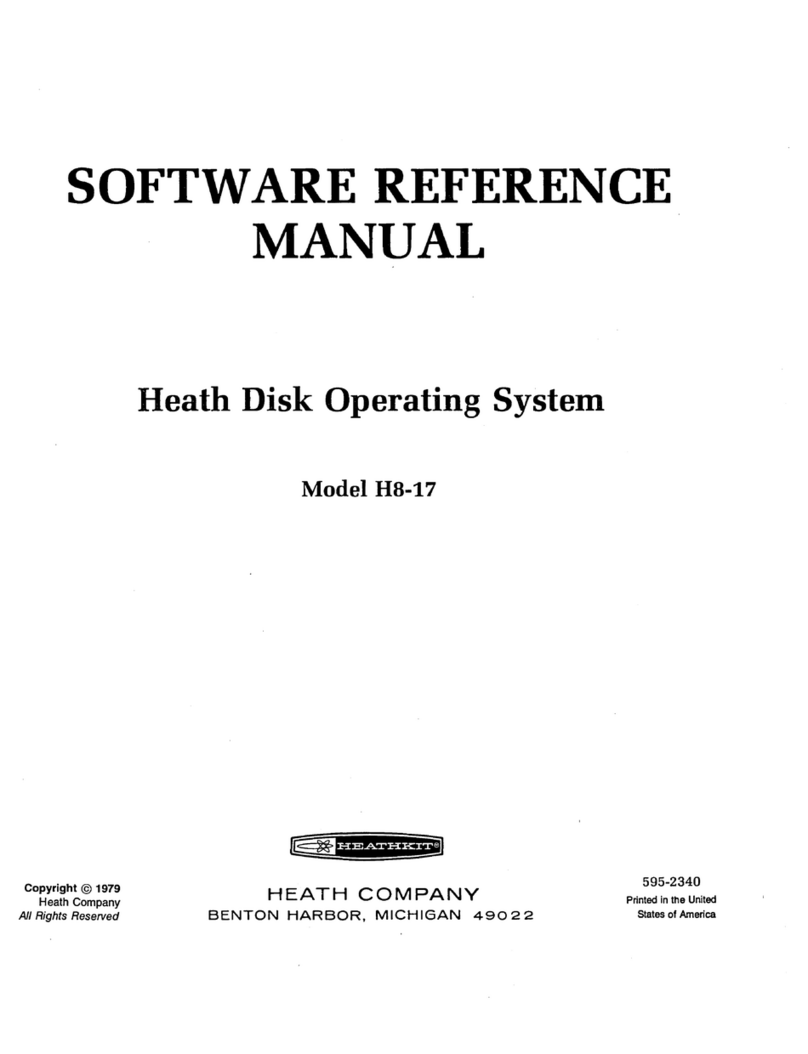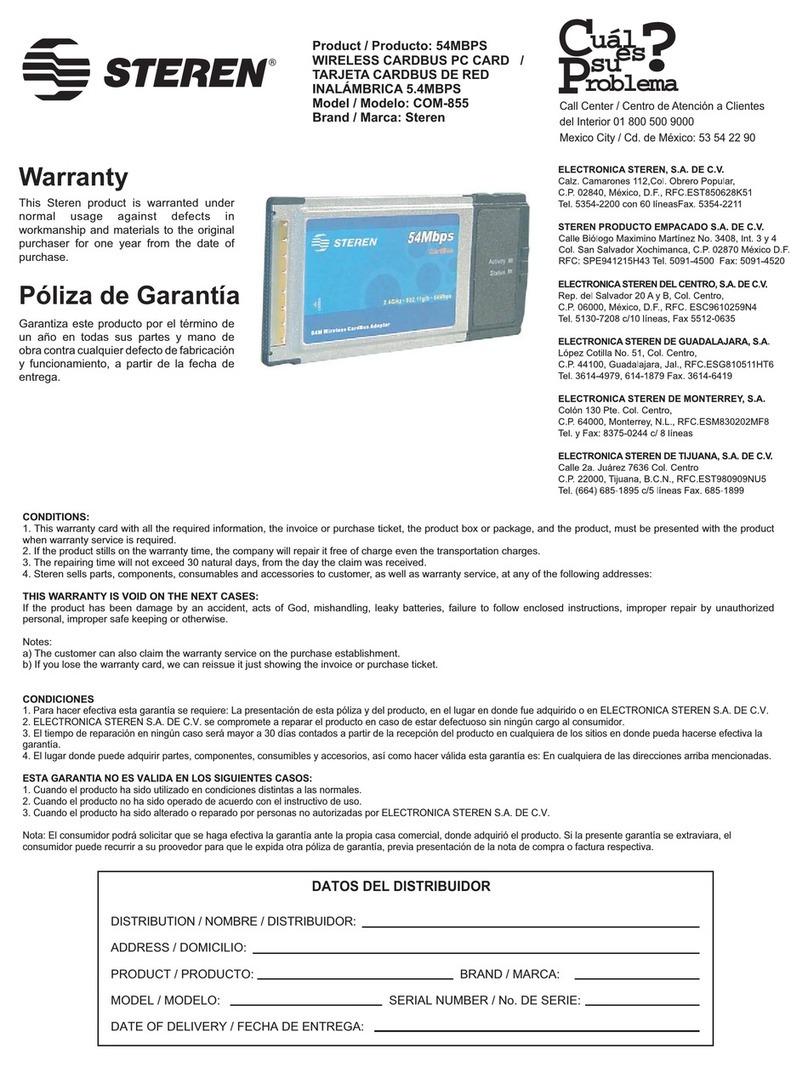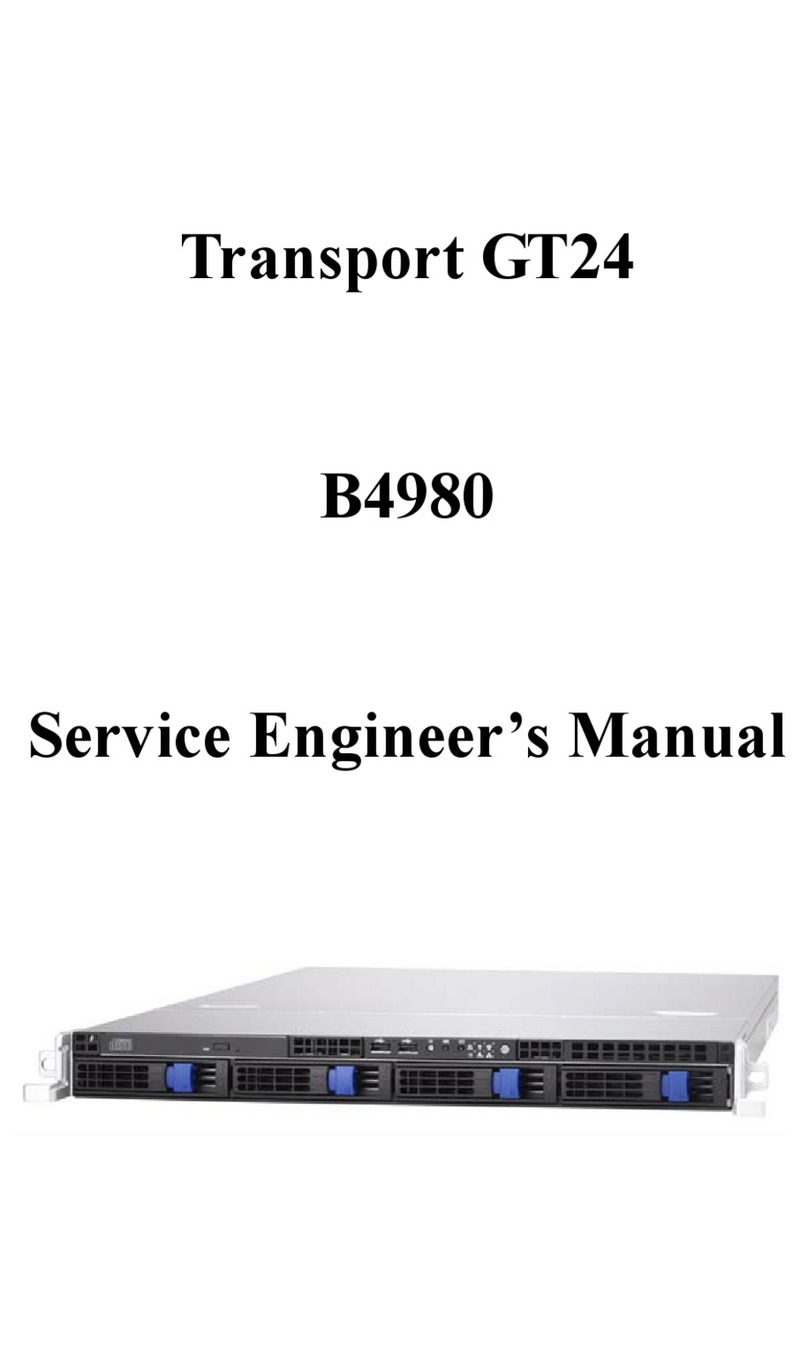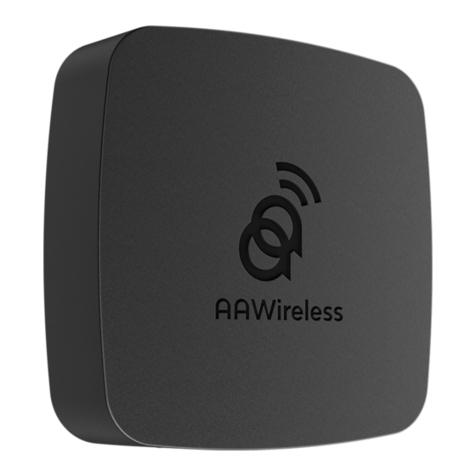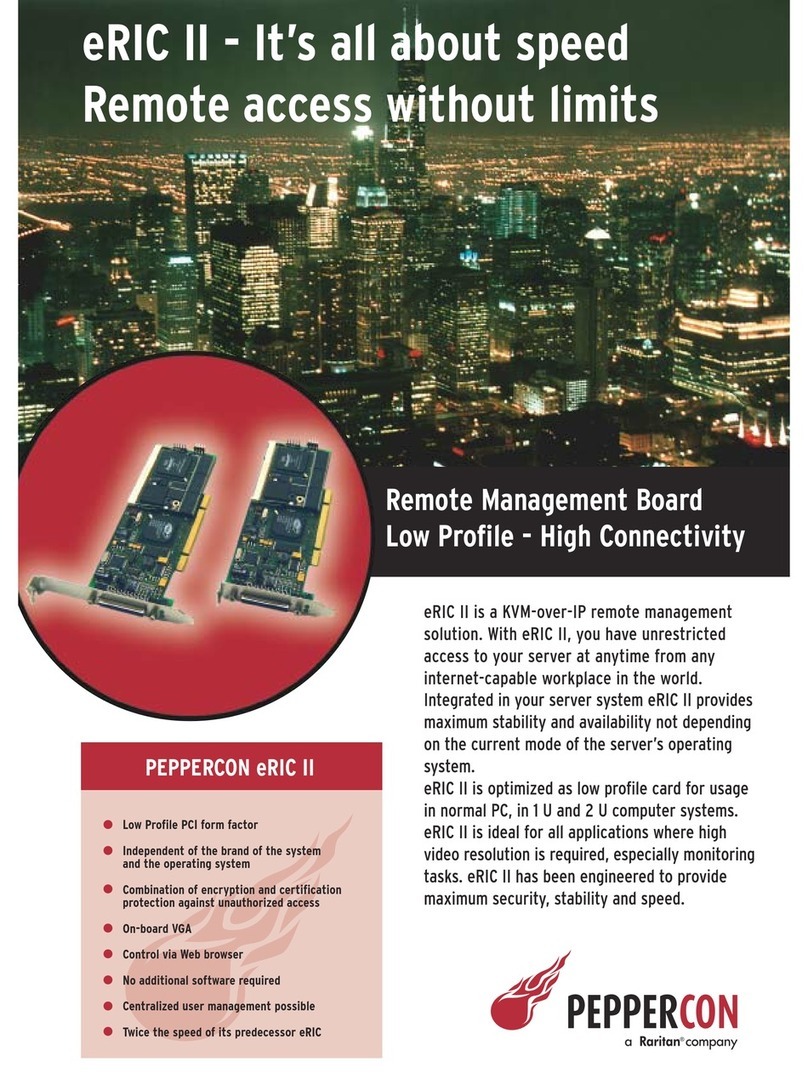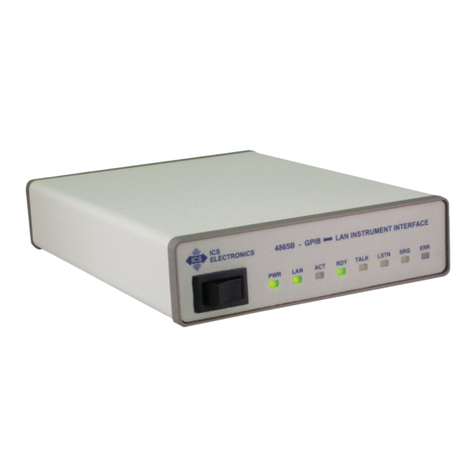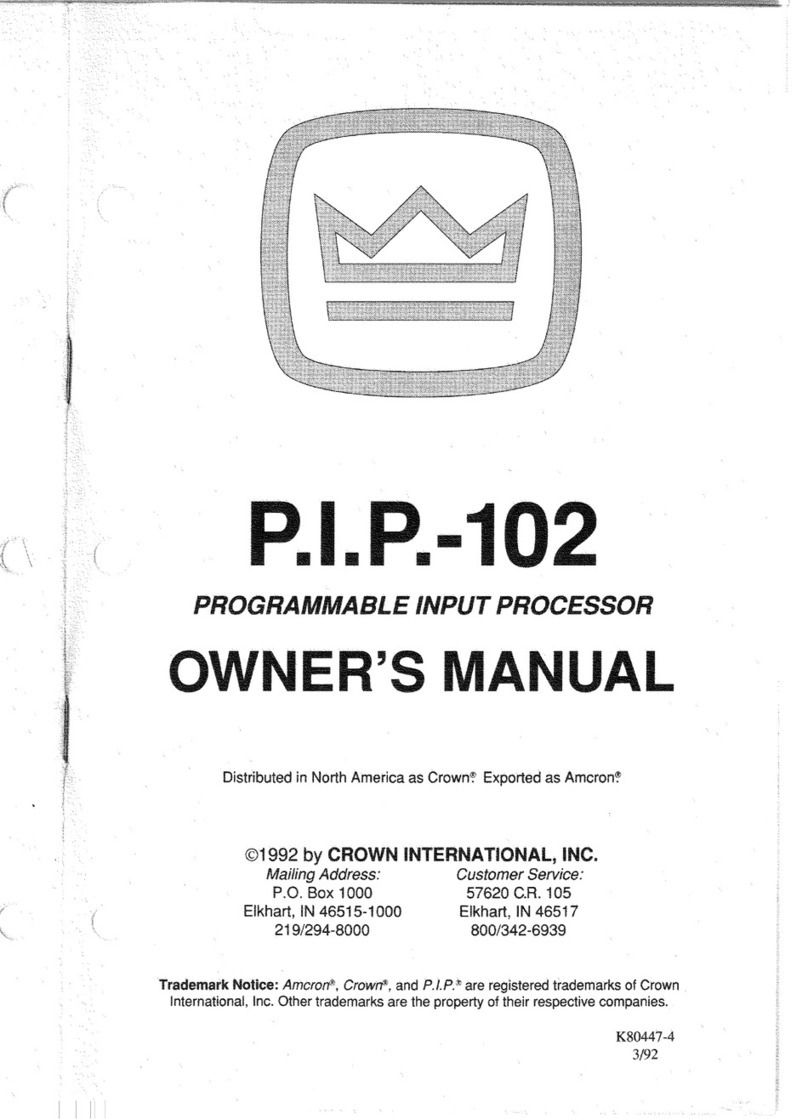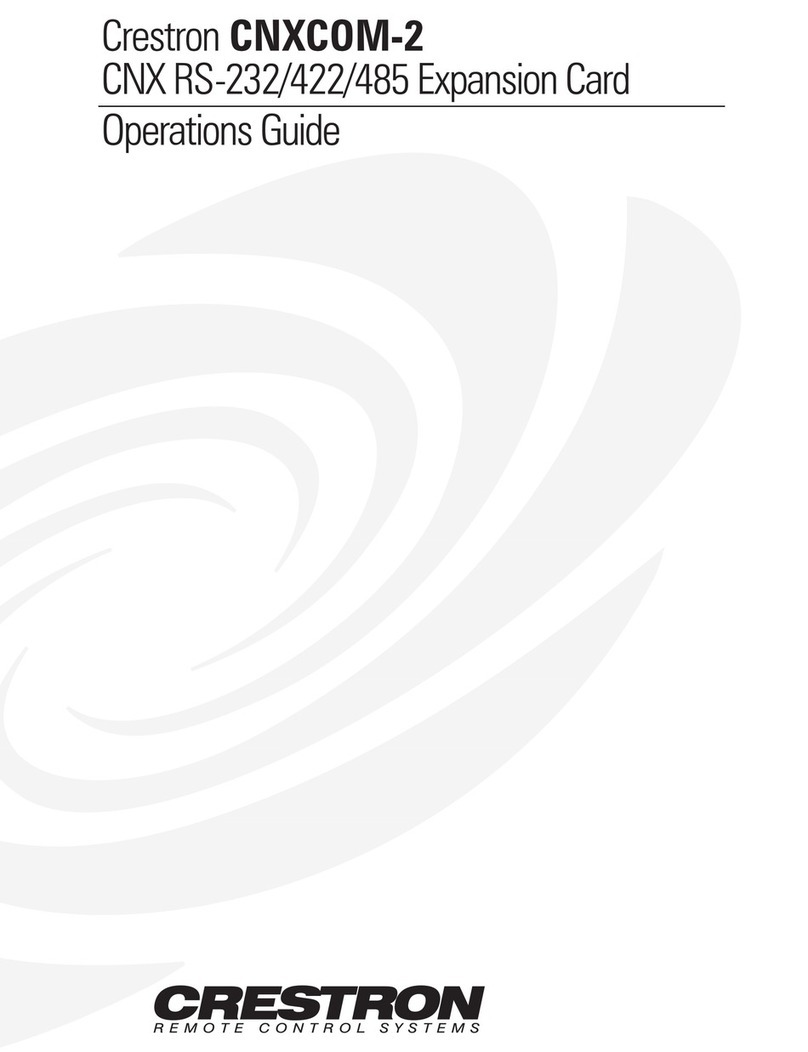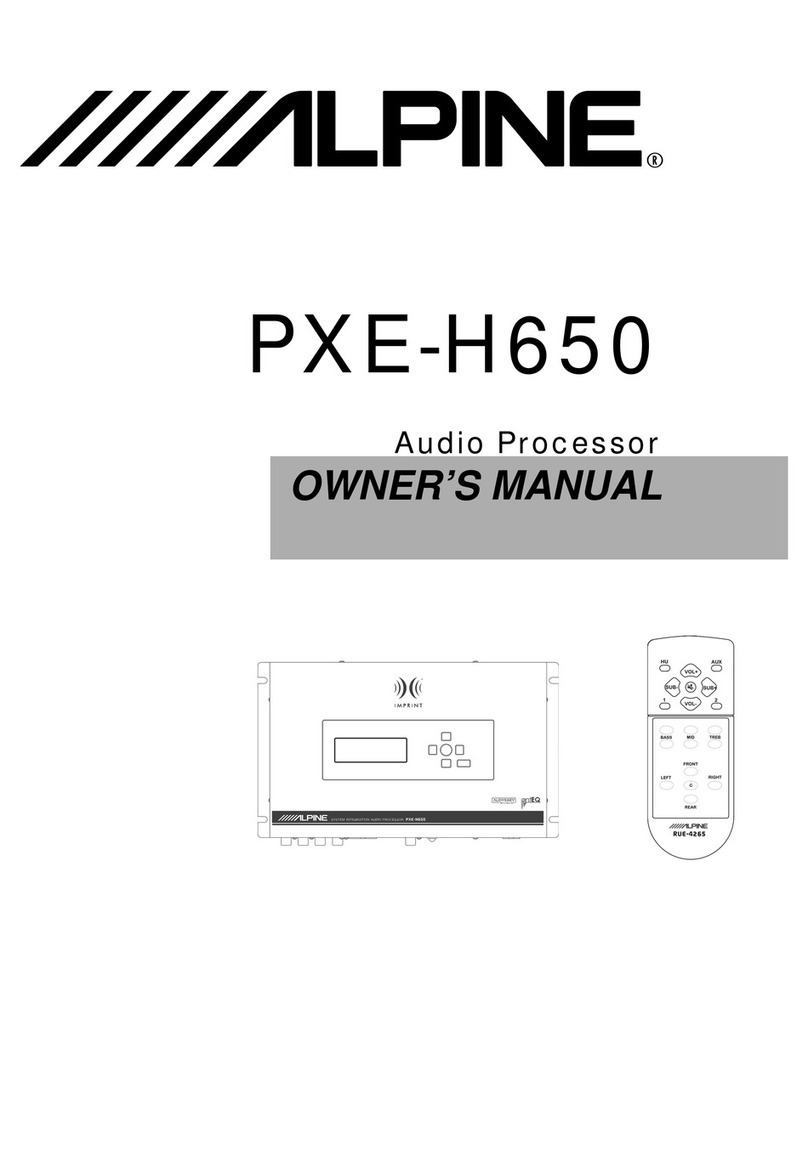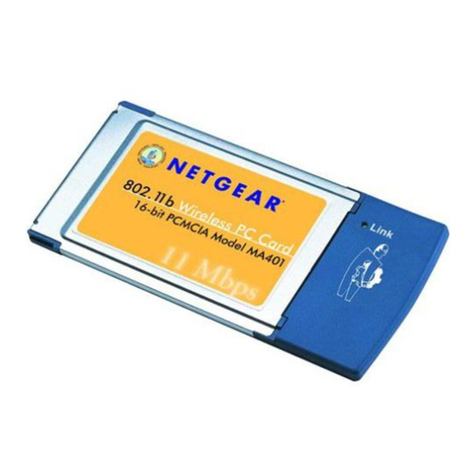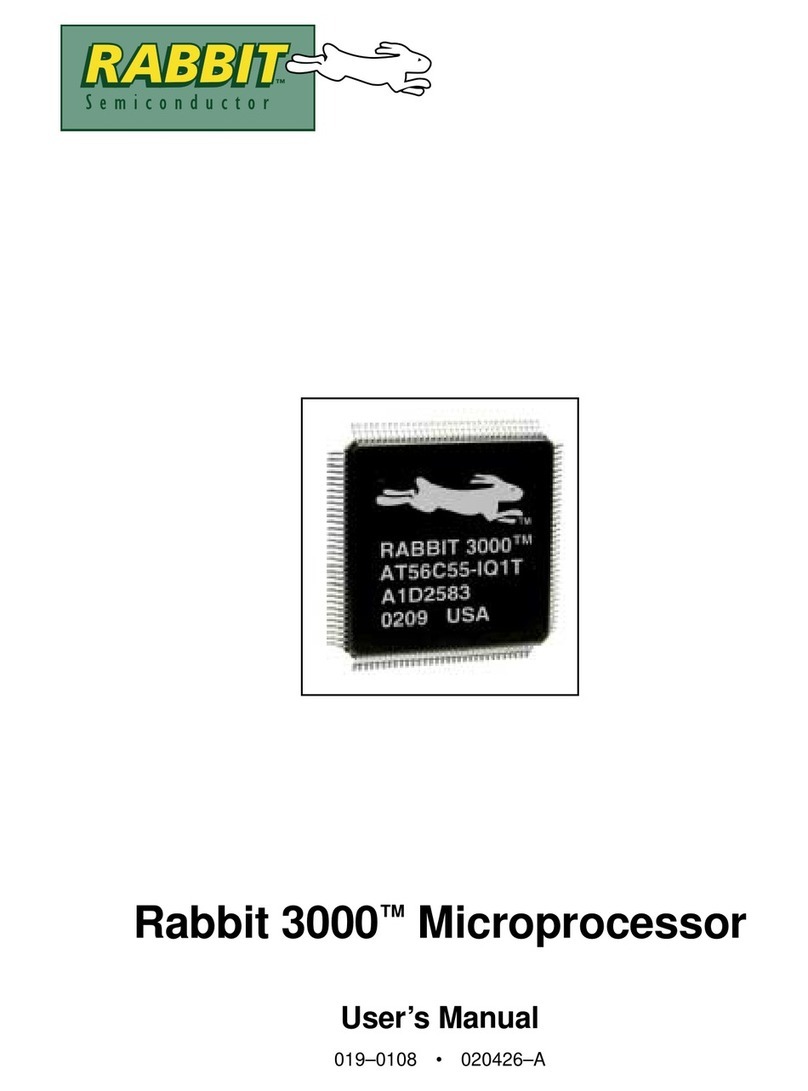Heath HEATHKIT HA8-8 User manual

HEATHKIT
MANUAL
HEATH
COMPANY
•
BENTON
HARBOR,
MICHIGAN

HEATH
COMPANY
PHONE
DIRECTORY
The
following
telephone
numbers
are
direct
lines
to
the
departments
listed:
Kit
orders
and
delivery
information
......................................
(6i6i
9 2-3411
Credit
...................................................................................
1616
1
9 2-3561
Replacement
Parts
.............................................
-
..
.
16I61
9 2-3571
Technical
Assistance
Phone
Numbers
8:00
A.M.
to
12
P.M.
and
1:00
P.M.
to
4:30
PM
ST
Wee*oa,s
Only
R/C.
Audio,
and
Electronic
Organs
(616-9 2-3310
Amateur
Radio
...............................................................
1616
1
962-3296
Test
Equipment,
Weather
Instruments
and
Home
Clocks
...................................................................
;616>
962-3315
Television
................................................................................
(616)
962-33G7
Aircraft,
Marine.
Security.
Scanners.
Automotive
Appliances
and
General
Products
......................................
(616
>
962-3 96
Computers
..............................................................................
(6l6i
982-3309
YOUR
HEATHKIT
90-DAY
LIMITED
WARRANTY
For
a
period
of
ninety
(90)
days
after
purchase,
Heath
Company
will
replace
or
repair
free
of
charge
any
parts
that
are
defective
either
in
materials
or
workmanship.
You
can
obtain
parts
directly
from
Heath
Company
by
writing
us
at
the
address
below
or
by
telephoning
us
at
(616)
9 2-3571.
And
we'll
pay
shipping
charges
to
get
those
parts
to
you
—
anywhere
in
the
world.
We
warrant
that
during
the
first
ninety
(90)
days
after
purchase,
our
products,
when
correctly
assembled,
calibrated,
adjusted
and
used
in
accordance
with
our
printed
instructions,
will
meet
published
specifications.
If
a
defective
part
or
error
in
design
has
caused
your
Heathkit
product
to
malfunction
during
the
warranty
period
through
no
fault
of
yours,
we
will
service
it
free
upon
proof
of
purchase
and
delivery
at
your
expense
to
the
Heath
factory,
any
Heathkit
Electronic
Center,
or
any
of
our
authorized
overseas
distributors.
You
will
receive
free
consultation
on
any
problem
you
might
encounter
in
the
assembly
or
use
of
your
Heathkit
product.
Just
drop
us
a
line
or
give
us
a
call.
Sorry,
we
cannot
accept
collect
calls.
Our
warranty
does
not
cover
and
we
are
not
responsible
for
damage
caused
by:
incorrect
assembly,
the
use
of
corrosive
solder,
defective
tools,
misuse,
or
fire:
or
by
unauthorized
modifications
to
or
uses
of
our
products
for
purposes
other
than
as
advertised.
Our
warranty
does
not
include
reimbursement
for
inconvenience,
loss
of
use.
customer
assembly
or
set-up
time.
This
warranty
covers
only
Heathkit
products
and
is
not
extended
to
allied
equipment
or
components
used
in
conjunction
with
our
products.
We
are
not
responsible
for
accidental
or
consequential
damages.
Some
states
do
not
allow
the
exclusion
or
limitation
of
incidental
or
consequential
damages,
so
the
above
limitation
or
exclusion
may
not
apply
to
you.
This
warranty
gives
you
specific
legal
rights,
and
you
may
also
have
other
rights
which
vary
from
state
to
state.
It
you
are
not
satisfied
with
our
service
(warranty
or
otherwise)
or
with
our
products,
write
directly
to
our
Director
of
Customer
Services,
Heath
Company.
Benton
Harbor,
Michigan
49022.
He
will
make
certain
your
problems
receive
immediate,
personal
attention.
HEATH
COMPANY
BENTON
HARBOR,
Ml.
9022
The
Heath
Company
reserves
the
right
to
discontinue
products
and
to
change
specifications
at
any
time
without
incurring
any
obligation
to
incorporate
new
features
in
products
previously
sold.

Heathkit®
Manual
for
the
EXTENDED
CONFIGURATION
BOARD
Model
HA -
595-2509-01
HEATH
COMPANY
BENTON
HARBOR,
MICHIGAN
49022
Copyright
©
1980
Heath
Company
All
Rights
Reserved
Printed
in
the
United
States
of
America

TABLE
OF
CONTENTS
Introduction
..................................................................
2
Assembly
Notes
............................................................
3
Parts
List
........................................................................
6
Step-by-Step
Assembly
..............................................
8
ircuit
Board
Assembly
....................................
8
ircuit
Board
heckout
....................................
19
jumper
Wire
Assembly
....................................
19
Installation
and
Operation
......................................
20
Initial
Tests
.........................................................
21
Status
Port
...........................................................
23
ROM
Disable
(ORG
0)
.......................................
24
Side
Select
...........................................................
28
Modification
Tests
.............................................
30
ircuit
Description
.
...................................................
31
ircuit
Board
X-Ray
View
......................................
32
Integrated
ircuit
Identification
............................
33
Schematic
..........................................................
Fold-in
Warranty
..........................................
Inside
front
cover
ustomer
Service
............................
Inside
rear
cover
INTRODUCTION
The
Heathkit
Model
HA8-8
Extended
onfiguration
Board
is
designed
to
operate
with
the
Model
H8
om
puter
to
provide
a
general
purpose
status
port,
ROM
disable
(ORGfl),
and
side
select
for
double-sided
disk
drives.

ASSEMBLY
NOTES
TOOLS
You
will
need
these
tools
to
assemble
your
kit.
HEATHKIT
SOLDER
I
NG
IRON
*T0
REMOVE
SOLDER
FROM
CIRCUIT
CONNECTIONS.
ASSEMBLY
1.
Follow
the
instructions
carefully.
Read
the
en
tire
step
before
you
perform
each
operation.
2.
The
illustrations
in
the
Manual
are
called
Picto
rials
and
Details.
Pictorials
show
the
overall
op
eration
for
a
group
of
assembly
steps;
Details
generally
illustrate
a
single
step.
When
you
are
directed
to
refer
to
a
certain
Pictorial
“
for
the
following
steps,
”
continue
using
that
Pictorial
until
you
are
referred
to
another
Pictorial
for
another
group
of
steps.
3.
Most
kits
use
a
separate
“
Illustration
Booklet
”
that
contains
illustrations
(Pictorials,
Details,
etc.)
that
are
too
large
for
the
Assembly
Manual.
Keep
the
“
Illustration
Booklet
”
with
the
As
sembly
Manual.
The
illustrations
in
it
are
ar
ranged
in
Pictorial
number
sequence.
4.
Position
all
parts
as
shown
in
the
Pictorials.
5.
Solder
a
part
or
a
group
of
parts
only
when
you
are
instructed
to
do
so.

6.
Each
circuit
part
in
an electronic
kit
has
its
own
component
number
(R2,
4,
etc.).
Use
these
numbers
when
you
want
to
identify
the
same
part
in
the
various
sections
of
the
Manual.
These
numbers,
which
are
especially
useful
if
a
part
has
to
be
replaced,
appear:
—
In
the
Parts
List,
—
At
the
beginning
of
each
step
where
a
com
ponent
is
installed,
—
In
some
illustrations,
—
In
the
Schematic,
—
In
the
section
at
the
rear
of
the
Manual.
7.
When
you
are
instructed
to
cut
something
to
a
particular
length,
use
the
scales
(rulers)
pro
vided
at
the
bottom
of
the
Manual
pages.
SAFETY
WARNING:
Avoi
eye
injury
when
you
cut
off
excessive
lea
lengths.
Hol
the
lea s
so
they
cannot
fly
towar
your
eyes.
SOLDERING
Soldering
is
one
of
the
most
important
operations
you
will
perform
while
assembling
your
kit.
A
good
sol
der
connection
will
form
an
electrical
connection
be
tween
two
parts,
such
as
a
component
lead
and
a
circuit
board
foil.
A
bad
solder
connection
could
pre
vent
an
otherwise
well-assembled
kit
from
operating
properly.
It
is
easy
to
make
a
good
solder
connection
if
you
follow
a
few
simple
rules:
1.
Use
the
right
type
of
soldering
iron.
A
25
to
40-watt
pencil
soldering
iron
with
a
1/8"
or
3/16"
chisel
or
pyramid
tip
works
best.
2.
Keep
the
soldering
iron
tip
clean.
Wipe
it
often
on
a
wet
sponge
or
cloth;
then
apply
solder
to
the
tip
to
give
the
entire
tip
a
wet
look.
This
process
is
called
tinning,
and
it
will
protect
the
tip
and
enable
you
to
make
good
connections.
When
solder
tends
to
“
ball
”
or
does
not
stick
to
the
tip
,
the
tip
needs
to
be
cleaned
and
retinned.
NOTE:
Always
use
rosin
core,
radio-type
solder
(60:40
or
50:50
tin-lead
content)
for
all
of
the
solder
ing
in
this
kit.
This
is
the
type
we
have
supplied
with
the
parts.
The
Warranty
will
be
void
and
we
will
not
service
any
kit
in
which acid
core
solder
or
paste
has
been
used.

Heathkit*
PARTS
Resistors
are
identified
in
Parts
Lists
and
steps
by
their
resistance
value
in
ft
(ohms),
kft
(kilohms),
or
Mft
(megohms).
They
are
usually
identified
by
a
color
code
and
four
or
five
color
bands,
where
each
color
represents
a
number.
These
colors
(except
for
the
last
band,
which
indicates
a
resistor
’
s
“
tolerance
”
)
will
be
given
in
the
steps
in
their
proper
order.
Therefore,
the
following
color
code
is
given
for
information
only.
NOTE:
Occasionally,
a
“precision
”
or
“
power
”
resis
tor
may
have
the
value
stamped
on
it.
1/4-WATT
1/2-WATT
1-WATT
—
=G=D=
—
Multiplier
BANDS:
12
3^
Tolerance
Band
1
1st
Digit
Color
Digit
Black
0
Brown
1
Red
2
Orange
3
Yellow
4
Green
5
Blue
6
Violet
7
Gray
White
9
Band
2
2nd
Digit
Color
Digit
Black
0
Brown
1
Red
2
Orange
3
Yellow
4
Green
5
Blue
6
Violet
7
Gray
White
9
Band
3
(if
used)
3rd
Digit
Color
Digit
Black
0
Brown
1
Red
2
Orange
3
Yellow
4
Green
5
Blue
6
Violet
7
Gray
White
9
Multiplier
Color
Multiplier
Black
1
Brown
10
Red
100
Orange
1,000
Yellow
10,000
Green
100,000
Blue
1,000,000
Silver
0.01
Gold
0.1
Resistance
Tolerance
Color Tolerance
Silver
±10%
Gold
±
5%
Brown
±
1%
Capacitors
will
be
called
out
by
their
capacitance
value
in
/xF
(microfarads)
or
pF
(picofarads)
and
type:
ceramic,
Mylar*,
electrolytic,
etc.
Some
capacitors
may
have
their
value
printed
in
the
following
man
ner:
EXAMPLES:
151K
=
15
x
10
=
150
pF
759
=
75
X0.1
=
7.5
pF
First
digit
of
capacitor's
value:
1
■
Second
digit
of
capacitor
’
s
value:
5
-
Multiplier:
Multiply
the
first
&
second
digits
by
the
proper
value
from
the
Multiplier
Chart.
To
find
the
tolerance
of
the
capacitor,
look
up
this
letter
in
the
Tolerance
NOTE:
The
letter
“
R
”
may
be
used
at
times
to
signify
a
decimal
point:
as
in:
2R2
=
2.2
(pF
or
/xF).
columns.
DuPont
Registered
Trademark
MULTIPLIER
TOLERANCE
OF
CAPACITOR
FOR
THE
NUMBER:
MULTIPLY
BY:
10
pF
OR
LESS
LETTER
OVER
10
pF
0
1
±0.1
pF
B
1
10
±0.25
pF
C
2
100
±0.5
pF
D
3
1000
±1.0
pF
F
±1%
4
10,000
±2.0
pF
G
±2%
5
100,000
H
±3%
J
±5%
0.01
K
±10%
9
0.1
M
±20%

PARTS
LIST
Unpack
the
kit
and
check
each
part
against
the
follow
ing
list.
The
key
numbers
correspond
to
the
numbers
on
the
“
Parts
Pictorial
”
.
Return
any
part
that
is
packed
in
an
individual
envelope,
with
the
part
number
on
it,
to
the
envelope
after
you
identify
it
until
that
part
is
called
for
in
a
step.
Do
not
discard
any
packing
material
until
all
parts
are
accounted
for.
To
order
a
replacement
part,
always
include
the
Part
Number
and
use
the
Parts
Order
Form
furnished
with
this
kit.
If
a
Parts
Order
Form
is
not
available,
use
one
of
the
“
Expedited
Parts
Order
Forms
”
at
the
rear
of
this
Manual,
or
refer
to
“
Replacement
Parts
”
inside
the
rear
cover.
Your
Warranty
is
located
inside
the
front
cover.
For
prices,
refer
to
the
separate
“
Heath
Parts
Price
List.
”
KEY
HEATH
QTY.
DESCRIPTION
CIRCUIT
No.
Part
No.
___________________Comp.
No.
RESISTORS
—
CAPACITORS
NOTE:
The
following
resistors
are
rated
at
1
/4-watt
and
have
a
KEY
HEATH
No.
Part
No.
QTY.
DESCRIPTION
CIRCUIT
Comp.
No.
tolerance
of
5%.
5%
is
indicated
by
a
gold
fourth
color
band.
A1
6-221-12
2
220
fl
(red-red-brn)
resistor
R1,
R2,
A1
6-102-12
11
1000
fl
(brn-blk-red)
resistor
R3,
R4,
R5,
R6,
R7,
R ,
R9,
R11,
R12,
R13,
R14
B1
21-761
3
.01
p.F
ceramic
capacitor
C1,
C2,
C5
B2
25-221
2
2.2
/
j
.F
tantalum
capacitor
C3,
C4
INTEGRATED
CIRCUITS
NOTE:
Integrated
circuits
are
marked
for
identification
in
one
of
the
following
four
ways:
1.
Part
number.
2.
Type
number.
(This
refers
only
to
the
numbers;
the
letters
may
be
different
or
missing.)
3.
Part
number
and
type
number.
4.
Part
number
and
a
type
number
other
than
the
one
listed.
C1
443-755
1
74LS04
U4
C1
443-732
1
74LS30
U5
C1
443-77
1
743
U6
C1
443-730
1
74LS74
U3
C1
443-754
1
74LS240
U2
C2
442-54
1
7 05
U1
CAUTION
:
The
following
IC
can
be
damaged
by
static
electric
ity.
Do
not
remove
this
IC
from
the
conductive
foam
until
you
are
instructed
to
do
so
in
a
step.
C1
444-70*
1
ROM
IC204
*
NOTE:
Your
integrated circuit
may
be
marked
444-74.
Either
integrated circuit
will
work
properly.
CONNECTORS
—
SOCKETS
D1
432- 65
1
3-connector
shell
D2
432- 66
4
Spring
connector
(3
extra)
D3
432-946
1
25-pin
plug
D4
432-9 6
1
3-pin
plug
D5
432-1125
2
26-pin
socket**
D6
434-29
4
14-pin
IC
socket
D7
434-311
1
20-pin
IC
socket
MISCELLANEOUS
E1
E2
E3
E4
E5
60-621
1
-section
slide
switch
5-2521-1
1
Circuit
board
261-29
2
Square
foot
340-
12"
Bare
wire
344-55
6"
Green
wire
344-92
12"
Red
wire
43 -55
2
Polarizing
plug
Blue
and
white
label
490-1 5
1
Desoldering
braid
1
Manual
(See
Page
1
for
part
number.)
1
ROM
(listing)
Solder
**NOTE:
You
may
have
been
supplied
two
6-pin
and
two
20-pin
sockets
instead
of
two
26-pin
sockets.
SW1

Heathkit
PARTS
PICTORIAL
ALWAYS
IDENTIFY
AN
I.C.
BY
THE
PART
NUMBER
OR
TYPE
NUMBER
NOTE:
THE
STYLE
MAY
BE
SLIGHTLY
DIFFERENT
THAN
SHOWN.
'a
a
s

STEP-BY-STEP
ASSEMBLY
CIRCUIT
BOARD
ASSEMBLY
CONTINUED
STARTS
(
)
In
the
following
steps,
you
will
be
given
detailed
instructions
on
how
to
install
and
solder
the
first
part
on
the
circuit
board.
Read
and
perform
each
step
carefully.
Then
use
the
same
procedure
whenever
you
install
parts
on
a
circuit
board.
(
)
Solder
the
resistor
leads
to
the
cir
cuit
board
as
follows
1.
Push
the
soldering
iron
tip
against
both
the
lead
and
the
circuit
board
foil.
Heat
both
for
two
or
three
seconds.
SOLDERING
IRON-
COMPONENT
LEADS
(
)
Position
the
circuit
board
as
shown
with
the
printed
side
(not
the
foil
side)
up.
(
)
R5:
Hold
a
1000
fl
(brn-blk-red)
resistor
with
long-nose
pliers
as
shown
and bend
the
leads
straight
down
to
fit
the
hole
spacing
on
the
circuit
board.
(
)
Push
the
leads
through
the
holes
at
the
indicated
location
on
the
circuit
board.
The
end
with
color
bands
may
be
positioned
either
way.
(
)
Press
the
resistor
against
the
cir
cuit
board.
Then
bend
the
leads
outward
slightly
to
hold
the
resis
tor
in
place.
2.
Then
apply
solder
to
the
other
side
of
the
connection.
IMPOR
TANT:
Let
the
heated
lead
and
the
circuit
board
foil
melt
the
solder.
SOL
DERI
NG
IRON-
SOLDER-
As
the
solder
begins
to
melt,
allow
it
to
flow
around
the
con
nection.
Then
remove
the
solder
and
the
iron
and
let
the
connec
tion
cool.
SOLDERING
&
SOLDER
(
)
ut
off
the
excess
lead
lengths
close
to
the
connection.
WARN
ING:
lip
the
leads
so
the
ends
will
not
fly
toward
your
eyes.
PICTORIAL
1-1
(
)
heck
each
connection.
ompare
it
to
the
illustrations
on
Page
9.
After
you
have
checked
the
solder
connections,
proceed
with
the
as
sembly
on
Page
10.
Use
the
same
soldering
procedure
for
each
connection.

A
GOOD
SOLDER
CONNECTION
------------------------------------------------------------------------
,
SOLDER
FLOWS
OUTWARD
AND
GRADUALLY
BLENDS
/
•
When
you
heat
the
lead
and
the
circuit
board
foil
at
the
same
I
time,
the
solder
will
flow
evenly
onto
the
lead
and
the
foil.
I
The
solder
will
make
a
good
electrical
connection
between
^the
lead
and
the
foil.
_
POOR
SOLDER
CONNECTIONS
ROSIN
"
//
SOLDER
ING
✓
IRON
POSITIONED
SOLDER
DOES
NOT
FLOW
ONTO
LEAD.
A
DARK
ROSIN
BEAD
SURROUNDS
AND
IN
SULATES
THE
LEAD
FROM
THE
CONNECTION.
Z
z
£'''
INCORRECTLY
When
the
lead
is
not
heated
sufficiently,
the
solder
will
not
flow
onto
the
lead
as
shown
above.
To
cor
rect,
reheat
the
connection
and,
if
necessary,
apply
a
small
amount
of
additional
solder
to
obtain
a
good
connection.
SOLDER
APPEARS
TO
FLOW
INWARD
AND
SET
ON
TOP
OF
THE
FOIL.
SOLDERING
IRON
POSITIONED
INCORRECTLY
ROSIN
FOIL
...........
.........
"T
FT.
____
i
..........
.............
When
the
foil
is
not
heated
sufficiently
the
solder
will
blob
on
the
circuit
board
as
shown
above.
To
correct,
reheat
the
connection
and,
if
necessary,
apply
a
small
amount
of
additional
solder
to
obtain
a
good
connec
tion.
SOLDER
BRIDGES
A
solder
bridge
between
two
adjacent
foils
is
shown
in
photograph
A.
Photograph
B
shows
how
the
con
nection
should
appear.
A
solder
bridge
may
occur
if
you
accidentally
touch
an
adjacent
previously
sol
dered
connection,
if
you
use
too
much
solder,
or
if
you
“
drag
”
the
soldering
iron
across
other
foils
as
you
remove
it
from
the
connection.
A
good
rule
to
follow
is:
always
take
a
good
look
at
the
foil
area
around
each
lead
before
you
solder
it.
Then,
when
you
solder
the
connection,
make
sure
the
solder
remains
in
this
area
and
does
not
bridge
to
another
foil.
This
is
especially
important
when
the
foils
are
small
and
close
together.
NOTE:
It
is
alright
for
solder
to
bridge
two
connec
tions
on
the
same
foil.
Use
only
enough
solder
to
make
a
good
connection,
and
lift
the
soldering
iron
straight
up
from
the
circuit
board.
If
a
solder
bridge
should
develop,
turn
the
circuit
board
foil-side-down
and
heat
the
solder
be
tween
connections.
The
excess
solder
will
run
onto
the
tip
of
the
soldering
iron,
and
this
will
remove
the
solder
bridge.
NOTE:
The
foil
side
of
most
circuit
boards
has
a
coating
on
it
called
“
solder
resist.
”
This
is
a
protective
insulation
to
help
prevent
solder
bridges.

STARTS
(
)
Make
sure
you
installed
resistor
R5
in
Pictorial
1-1.
(
)
R12:
1000
fl
(brn-blk-red).
NOTE:
eramic
capacitors
may
be
in
stalled
either
way
in
the
circuit
board.
(
)
2:
.01
i/,F
(103)
ceramic
capacitor.
Install
three
1000
fl
(brn-blk-red)
resis
tors
at
the
following
locations:
(
)
R3....................................................
(
)
RB
....................................................
(
)
R4....................................................
(
)
5:
.01
p.F
(103)
ceramic
capacitor.
(
)
Solder
the
leads
to
the
foil
and
cut
off
the
excess
lead
lengths.
CONTINUED
(
)
l:
.01
p.F
(103)
ceramic
capacitor.
(
)
R2:
220
fl
(red-
red-brn).
(
)
Rl:
220
fl
(red-red-brn).
Install
six
1000
fl
(brn-blk-red)
resis
tors
at
the
following
locations:
(
)
R14.
(
)
R13.
(
)
R9.
(
)
R7.
Rll.
(
)
R6.
(
)
Solder
the
leads
to
the
foil
and
cut
off
the
excess
lead
lengths.
PICTORIAL
1-2

Heathkit*
STARTS
You
will
install
I
sockets
in
the
fol
lowing
steps.
Be
sure
the
socket
pins
are
straight
and
then
install
the
socket
on
the
circuit
board
so
the
index
mark
on
the
board
can
still
be
seen.
Turn
the
circuit
board
over,
be
sure
there
is
a
pin
in
each
of
the
holes,
and
then
solder
the
pins
to
the
foil.
OTCH
NDEX
MARK
(
)
14-pin
I
socket.
(
)
14-pin
I
socket.
(
)
14-pin
I
socket.
(
)
14-pin
I
socket.
(
)
20-pin
I
socket.
(
)
arefully
check
each
socket
for
solder
bridges
between
pins.
If
a
solder
bridge
has
occurred,
hold
the
circuit
board
foil-side-down
as
shown,
and
hold
the
soldering
iron
tip
between
the
two
points
that
are
bridged.
The
solder
will
flow
down
the
soldering
iron
tip.
CIRCUIT
BOARD
IC
SOCKET
7ZZZ.
FOIL
SOLDERING
IRON
WOT
SOLDER
BRIDGE
(
)
CONTINUED
)
Pl:
3-pin
plug.
Start
the
shorter
plug
pins
into
the
circuit
board
holes
as
shown
and
push
the
plug
down
tight
against
the
circuit
board.
Then
solder
the
pins
to
the
foil
and
cut
off
any
excess
pin
lengths.
Ul:
7805
integrated
circuit
(#442-54).
First
bend
the
leads
straight
down
as
shown.
Then
in
sert
the
leads
into
the
circuit
board
holes.
Be
sure
the
I
is
tight
against
the
circuit
board.
Then
solder
the
leads
to
the
foil
and
cut
off
any
excess
lead
lengths.
BEND
LEADS
STRAIGHT
•....DOWN
M

CONTI
NU
EO
STARTS
(
)
ut
eight
1"
lengths
of
bare
wire.
Use
these
1"
bare
wires
in
the
fol
lowing
steps.
NOTE:
When
you
install
each
bare
jumper
wire
in
the
next step,
first
form
the
wire
into
a
loop
as
shown.
Then
install
the
wire
at
the
indicated
loca
tion.
Position
the
top
of
the
loop
1/4"
above
the
circuit
board.
Then
solder
the
lead
to
the
foil
and
cut
off
any
ex
cess
lead
lengths.
(
)
Install
bare
jumper
wires
at
the
eight
locations
indicated.
)
SW1:
8-section
slide
switch.
Mount
the
switch
so
the
numbers
0
through
7
are
away
from
integ
rated
circuit
U1
as
shown.
Then
solder
the
lugs
to
the
foil
and
cut
off
any
excess
lug
lengths.
NUMBERS
NOTE:
When
you
install
a
tantalum
capacitor,
match
the
positive
(+)
mark,
or
color
dot
on
the
capacitor
with
the
positive
(+)
mark
on
the
board.
POSITIVE
.MARK!
+
1
COLOR
DOT
POS
ITIVE
MARK
(
+
1
(
)
3:
2.2
pF
tantalum.
(
)
4:
2.2
p.F
tantalum.
(
)
Solder
the
leads
to
the
foil
and
cut
off
the
excess
lead
lengths.
PICTORIAL
1-4
0
14
’
/
2
3
/<
1
1/8
3/8
I
5/8
.
7/8
i
ih|i
»i
nf
1
i
1
1
(INCHES)
2
3
4
I
,
J
—
5
7
I
9
I
1O
6

Heathkit
NOTE:
The
pin
1
end
of
inline
inte
grated
circuits
may
be
marked
in
a
number
of
ways;
with
a
notch,
triangle,
dot,
the
numeral
1,
etc.
SHALL
INBEMTATIOM
CONTINUED
PIN
1
Be
sure
you
install
each
of
the
follow
ing
I
’
s
so
its
pin
1
end
is
toward
the
index
mark
on
the
circuit
board.
Before
you
apply
downward
pressure
to
the
I ,
make
sure
each
pin
is
cen
tered
in
its
proper
socket hole.
Handle
I
’
s
with
care
as
their
pins
are
very
easily
bent.
Should
it
ever
become
necessary
to
remove
an
I ,
use
a
screwdriver
and
insert
it
beneath
the
I ;
then
gently
rock
it
up
and
down
to
lift
the
I .
(
)
U6:
7438
integrated
circuit
(#443-77).
(
)
U5:
74LS30
integrated
circuit
(#443-732).
(
)
U4:
74LS04
integrated
circuit
(#443-755).
(
)
U3:
74LS74
integrated
circuit
(#443-730).
(
)
U2;
74LS240
integrated
circuit
(#443-754).
PICTORIAL
1-5

PICTORIAL
1-6
NOTE:
You
may
have
been
supplied
two
6-pin
and
two
20-pin
sockets
or
two
26-pin
sockets.
Use
the
steps
that
match
your
sockets.
26-PIN
SOCKETS
Refer
to
Pictorial
1-6
for
the
following
steps.
(
)
Locate
the
two
26-pin
sockets.
Then
refer
to
Detail
1-6A
and cut
off
the
indicated
lugs
at
one
end
of
each
socket.
1.
Push the
socket
onto
the
edge
of
the
circuit
board
next
to
the
data
jumpers.
2.
Make
sure
the
circuit
board
is
between
the
two
lugs
at
each
socket
connector.
Also
make
sure
each
lug
lines
up
with
a
foil
on
the
circuit
board.
NOTE:
The
socket
hole
where
you
cut
off
the
lugs
must
be
between
foil
contacts
24
and
25
as
shown.
Detail
1-6A
NOTE:
Perform
the
following
carefully.
The
sockets
are
very
difficult
to
remove
once
they
are
installed
wrong.
(
)
Use
the
following
procedure
to
install
one
of
the
26-pin
sockets
on
the
circuit
board:
3.
Solder
only
lugs
0
and
24
to
the
foil
on
the
component
side
of
the
circuit
board.
The
other
lugs
will
be
soldered
later.
(
)
Similarly,
install
the
remaining
26-pin
socket
on
the
edge
of
the
circuit
board
next
to
the
other
socket.
Make
sure
the
circuit
board
is
between
the
two
lugs
at
each
socket
connector.
Also,
make
sure
each
lug
lines
up
with
a
foil
on
the
circuit
board.
NOTE:
The
socket
hole
where
you
cut
off
the
lugs
must
be
between
foil
contact
49
and
the
nearby
corner
of
the
circuit
board.
Sol
der
only
lugs
25
and
49
to
the
foil
on
the
com
ponent
side
of
the
circuit
board.

Heathkit
Detail
1-6B
(
)
Locate
the
25-pin
plug.
Then
refer
to
Detail
1-6B
and
push
the
longer
pins
of
the
plug
into
the
two
26-pin
sockets
so
that
about
half
of
the
plug
pins
are
in
each
socket.
(
)
Adjust
the
sockets
as
necessary
so
they
are
parallel
to
the
circuit
board.
Then solder
all
the
socket
lugs
to
the
circuit
board
(both
sides).
(
)
Remove
and
discard
the
25-pin
plug.
(
)
heck
the
two
sockets
to
make
sure
the
edges
of
each
socket
are
parallel
to
the
surfaces
of
the
circuit
board.

6-PIN
AND
20-PIN
SOCKETS
Refer
to
Pictorial
1-7
for
the
following
steps.
NOTE:
Perform
the
following
steps
carefully.
The
sockets
are
very
difficult
to
remove
once
they
are
installed
wrong.
(
)
Use
the
following
procedure
to
install
one
of
the
20-pin
sockets
on
the
circuit
board:
1.
Push
the
socket
onto
the
edge
of
the
circuit
board
next
to
the
data
jumpers.
2.
Make
sure
the
circuit
board
is
between
the
two
lugs
at
each
socket
connector.
Also
make
sure
each
lug
lines
up
with
a
foil
on
the
circuit
board.
NOTE:
The
lugs
at
one
end
of
the
socket
must
line
up
with
foil
contact
“0
”
on
the
circuit
board
as
shown.
3.
Solder
only
lugs
0
and
19
to
the
foil
on
the
component
side
of
the
circuit
board.
The
other
pins
will
be
soldered
later.
(
)
Locate
a
6-pin
socket.
Then
refer
to
Detail
1-7A
and
cut
off
the indicated
lugs
at
one
end
of
the
socket.
(
)
Push
the
prepared
6-pin
socket
onto
the
edge
of
the
circuit
board
next
to
the
20-pin
socket.
Make
sure
the
circuit
board
is
between
the
two
lugs
at
each
socket
connector.
Also
make
sure
each
lug
lines
up
with
a
foil
on
the
circuit
board.
NOTE:
The
socket
hole
where
you
cut
off
the
lugs
must
be
between
foil
contacts
24
and
25
as
shown.
Do
not
solder
any
of
the
lugs
yet.
(
)
Push
the
remaining
6-pin
socket
onto
the
edge
of
the
circuit
board
next
to
the
other
6-pin
soc
ket.
Make
sure
the
circuit
board
is
between
the
two
lugs
at
each
socket
connector.
Also
make
sure
each lug
lines
up
with
a
foil
on
the
circuit
board
(foil
contacts
25
through
30).
OFF
Detail
1-7A

Detail
1-7B
Refer
to
Detail
1-7B
and
cut
off
the
indicated
lugs
at
one
end
of
the
remaining
20-pin
socket.
Push
the
prepared
20-pin
socket
onto
the
edge
of
the
circuit
board
next
to
the
6-pin
sockets.
Make
sure the
circuit
board
is
between
the
two
lugs
at
each
socket
connector.
Also
make
sure
each
lug
lines
up
with
a
foil
on
the
circuit
board.
NOTE:
The
socket
hole
where
you
cut
off
the
lugs
must
be
between
foil
contact
49
and
the
nearby
corner
of
the
circuit
board.
Solder
only
lugs
31
and
49
to
the
foil
on
the
component
side
of
the
circuit
board.
(
)
Locate
the
25-pin
plug.
Thenreferto
Detail
1-7
and
push
the
longer
pins
of
the
plug
into
the
four
sockets
as
shown.
(
)
heck
the
four
sockets
to
make
sure
the
edges
of
each
socket
are
parallel
to
the
surfaces
of
the
circuit
board.
(
)
Adjust
the
sockets
as
necessary
so
they
are
parallel
to
the
circuit
board.
Then solder
all
the
socket
lugs
to
the
circuit
board
(both
sides).
(
)
Remove
and
discard
the
25-pin
plug.
Detail
1-7C

PICTORIAL
1-8
Refer
to
Pictorial
1-8
for
the
following
steps.
(
)
Locate
the
two
polarizing
plugs.
Then
push
the
plugs
into
the
holes
of
the
26-pin
sockets
where
you
cut
off
the
lugs.
(
)
arefully
peel
the
backing
paper
from
a
square
foot.
Then
press
the
foot
onto
the
component
side
of
the circuit
board
in
the
location
shown.
(
)
Position
the circuit
board
as
shown
in
Pictorial
1-9
with
the
component
side
away
from
you.
(
)
arefully
peel
the
backing
paper
from
the
re
maining
square
foot.
Then
press
the
foot
onto
the
foil
side
of
the
circuit
board
in
the
location
shown
in
Pictorial
1-9.
PICTORIAL
1-9
2
0
%
1
/
2
%
1
I
1/8
3/8
I
8/8
.
7/8
I
l^ii
A'd
1
i'
h
'
J
O
5
1
(CM)
2
T
3
(INCHES)
1
>
1
r
■.
3
4
5
6
7
7
8
9
10
11
12
13
1
18
18
17
Table of contents
Other Heath Computer Hardware manuals
Popular Computer Hardware manuals by other brands
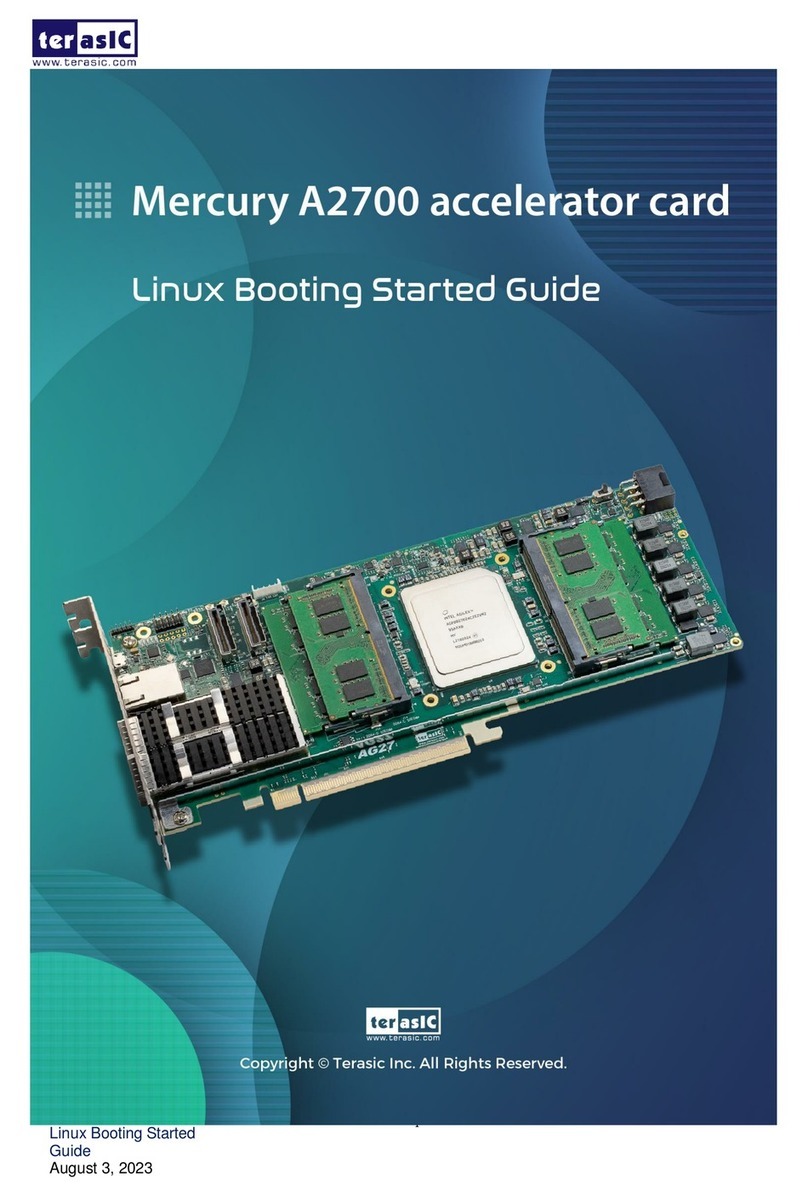
Terasic
Terasic Mercury A2700 Started guide
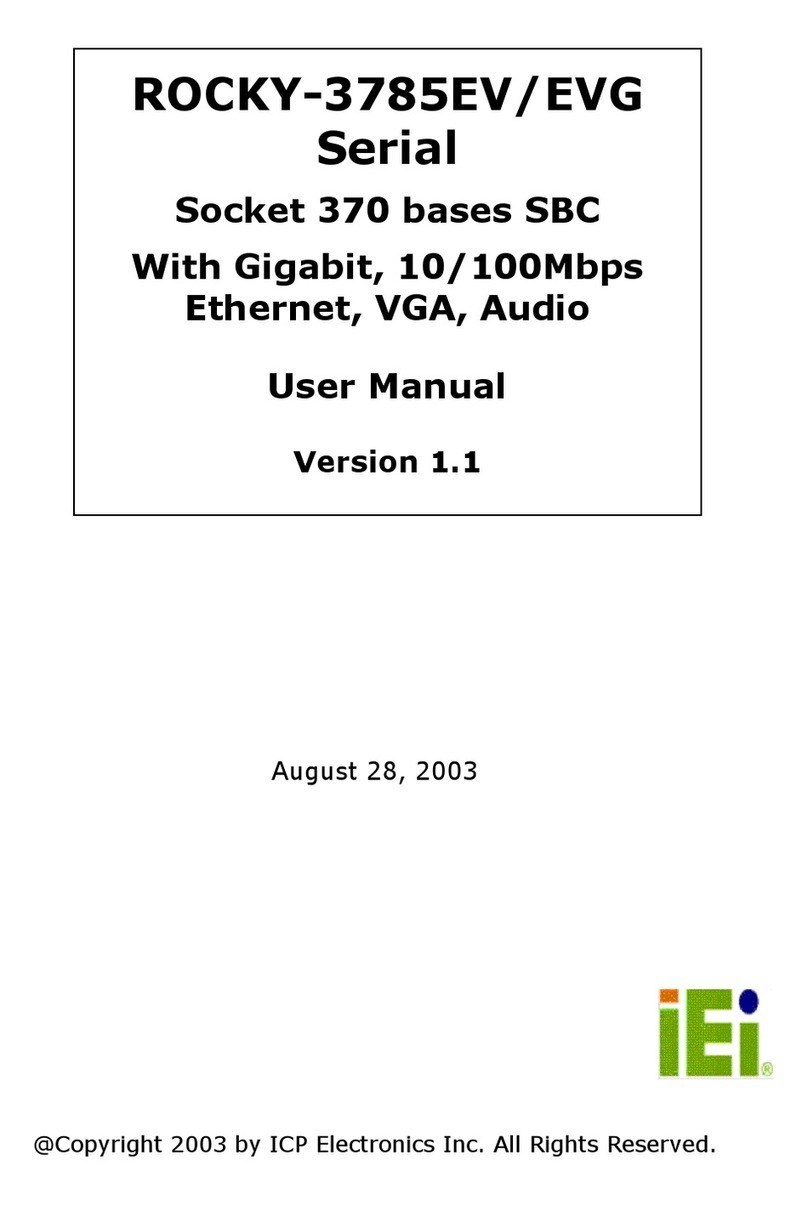
ICP Electronics
ICP Electronics ROCKY-3785EV Serial user manual
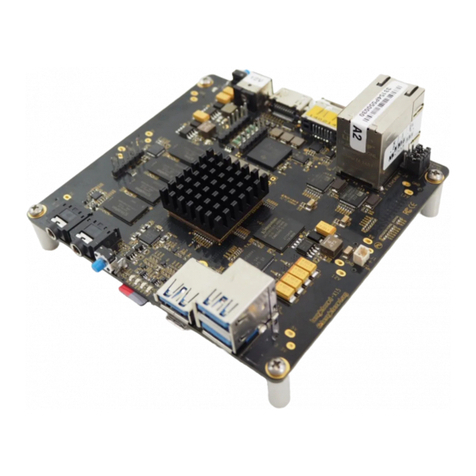
BeagleBoard
BeagleBoard X15 quick start guide

SIIG
SIIG eSATA II PCIe i/e Quick installation guide
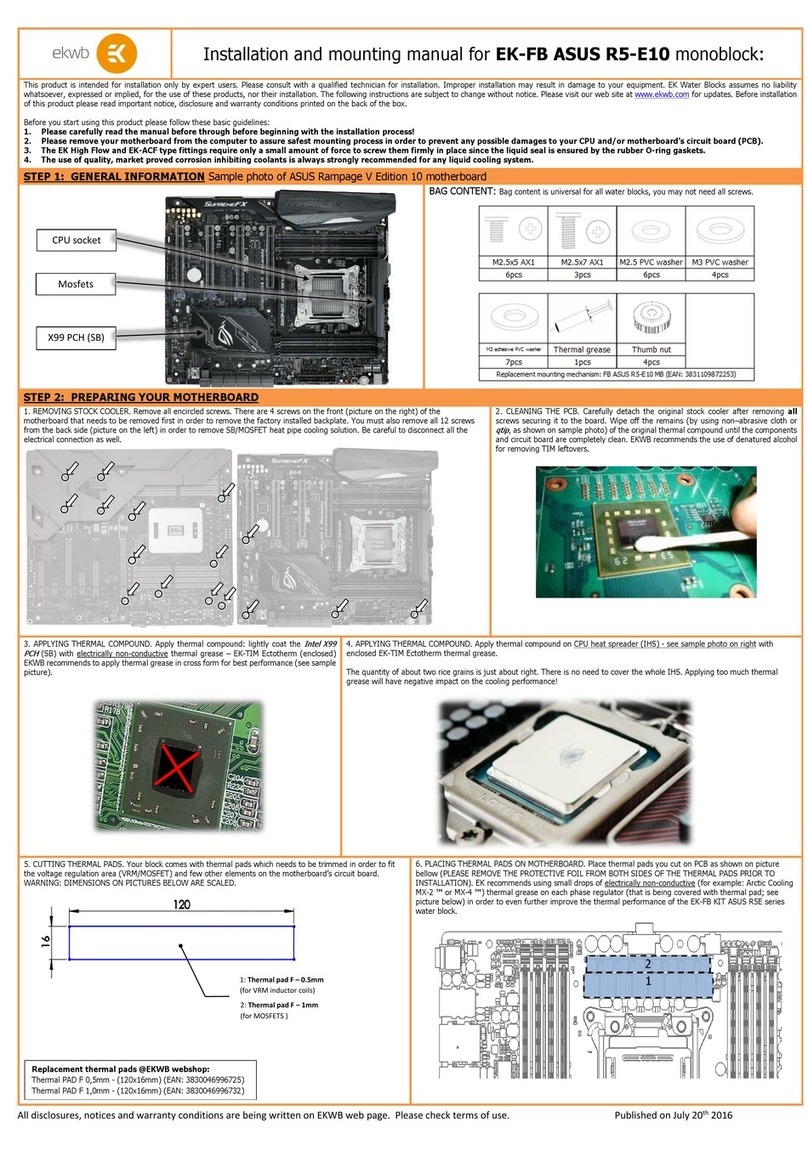
ekwb
ekwb EK-FB ASUS R5-E10 Installation and mounting manuals
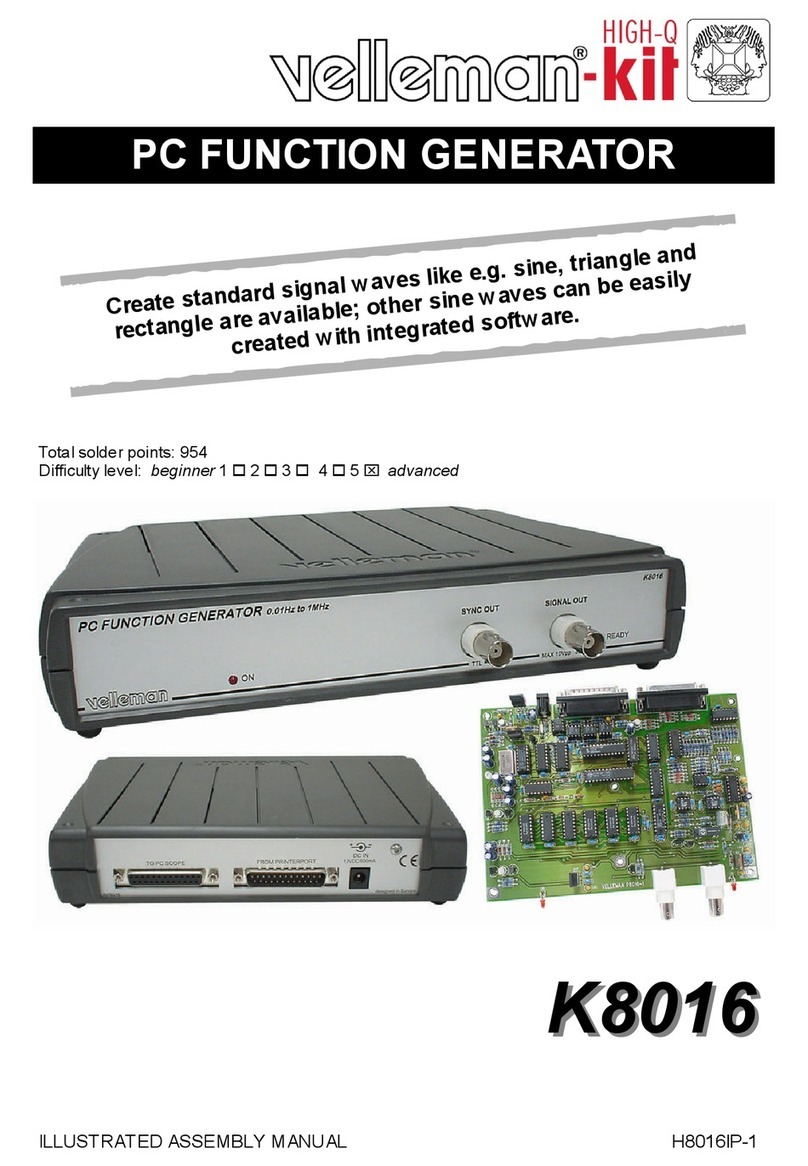
Velleman-Kit
Velleman-Kit K8016 Illustrated assembly manual
